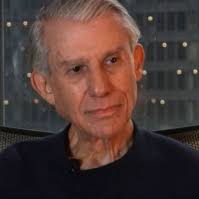This piece was reprinted by OpEd News with permission or license. It may not be reproduced in any form without permission or license from the source.
Brown explains that the BND:
"chiefly acts as a central bank, with functions similar to those of a branch of the Federal Reserve," that's neither federal or has reserves as it's owned by major private banks in each of the 12 Fed districts, New York by far the most dominant with Wall Street's majority control and a Fed chairman doing its bidding.
In contrast, BND is a public bank, 100% owned by the state, operating in the public interest and those of the state. It "avoids rivalry with private banks by partnering with them." Local banks do most lending. "The BND then comes in to participate in the loan, share risk, buy down the interest rate and buy up loans, thereby freeing up banks to lend more" as part of a continuing prosperity-creating virtuous circle. One of its functions "is to provide a secondary market for real estate loans, which it buys from local banks. Its residential loan portfolio is now $500 to $600 billion" in a state with around 700,000 people and thriving.
Its function in the property market helped it "avoid the credit crisis that afflicted Wall Street when the secondary market for loans collapsed in late 2007 and helped it reduce its foreclosure rate....(Its other services) include guarantees for entrepreneurial startups and student loans, the purchase of municipal bonds from public institutions, and a well-funded disaster loan program." When the state didn't meet its budget "a few years ago, the BND met the shortfall."
Year after year it works, freeing North Dakota from today's credit crisis and worst of the economic downturn. It's a win-win for the state, its agriculture, commerce, industry, entrepreneurial startups, students, homebuyers needing loans, and virtually anyone in the state able to qualify.
In sum, state-owned banks have "enormous advantages over smaller private institutions....Their asset bases are not marred by oversized salaries and bonuses, they have no shareholders" demanding high returns, and they don't speculate in derivatives or other high-risk investments. As a result, BND is healthy with a 25% return on equity, paying "a hefty dividend to the state projected at over $60 million in 2009" and well over five times that amount in the last decade, so it begs the question why other states don't operate the same way. With them, they might be struggling the way nearly all of them are today, especially major ones like California, New York, Michigan and Illinois.
Growing State Interest in Public Banks
On March 25, 2011, Ellen Brown's article headlined, "A Choice for States: Banks, Not Budget Crises," highlighting the growing interest in state-owned banks, including new initiatives exploring the idea - at least 12 so far with pending bills or feasibility studies to determine their potential. They include Oregon, Washington, Maryland, Illinois, Virginia, Massachusetts, Louisiana, California, Arizona, Maine, Vermont and Hawaii, considering public bank options like North Dakota, America's most prosperous state with one.
Next Page 1 | 2 | 3 | 4 | 5 | 6 | 7 | 8 | 9 | 10 | 11 | 12 | 13 | 14 | 15 | 16 | 17
(Note: You can view every article as one long page if you sign up as an Advocate Member, or higher).





